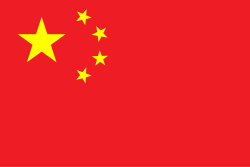Scientists Warn of Bat Viruses Poised to Jump to Humans
Researchers from Washington State University, Caltech, and the University of North Carolina have raised concerns about bat viruses that may be only a single mutation away from infecting humans, according to a study published in Nature Communications. The study focuses on HKU5 viruses, a lesser-known subgroup of merbecoviruses related to MERS-CoV, which has a high fatality rate.
Lead researcher Dr. Michael Letko noted that while HKU5 viruses currently bind to the ACE2 receptor in bats, minor genetic changes could enable them to infect humans. Alarmingly, some HKU5 variants have already been found to infect minks in China, indicating interspecies transmission. Researchers utilized AlphaFold 3, an advanced AI tool, to predict possible mutations and interactions with human cells.
Previous work by Chinese virologist Shi Zhengli highlighted that HKU5-CoV-2 could potentially infect human cells in lab settings. Dr. Letko emphasized that, while immediate panic is unwarranted, preparation is crucial as new variants could pose significant health risks in the future.
 China
China